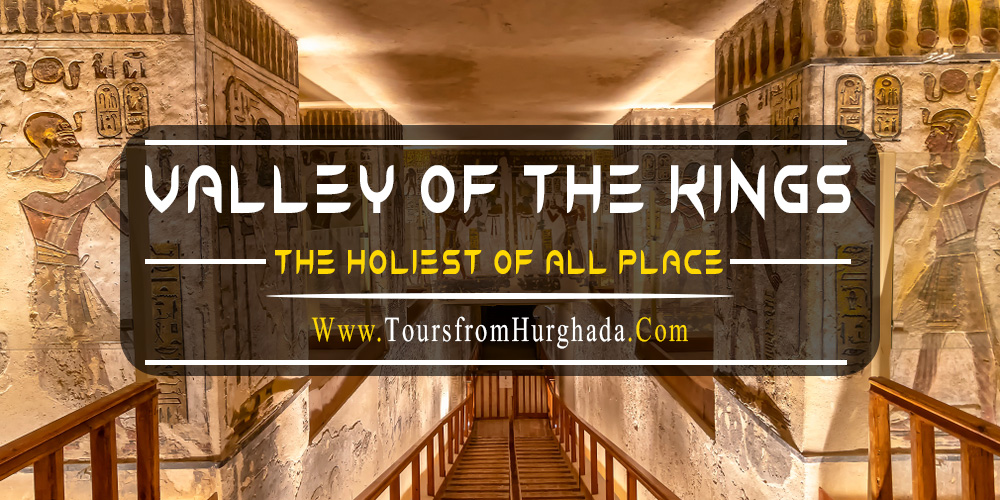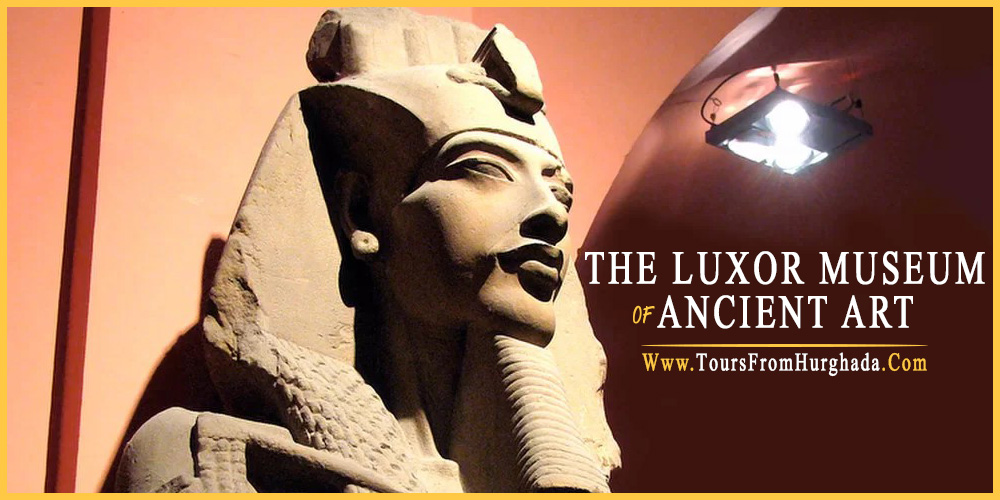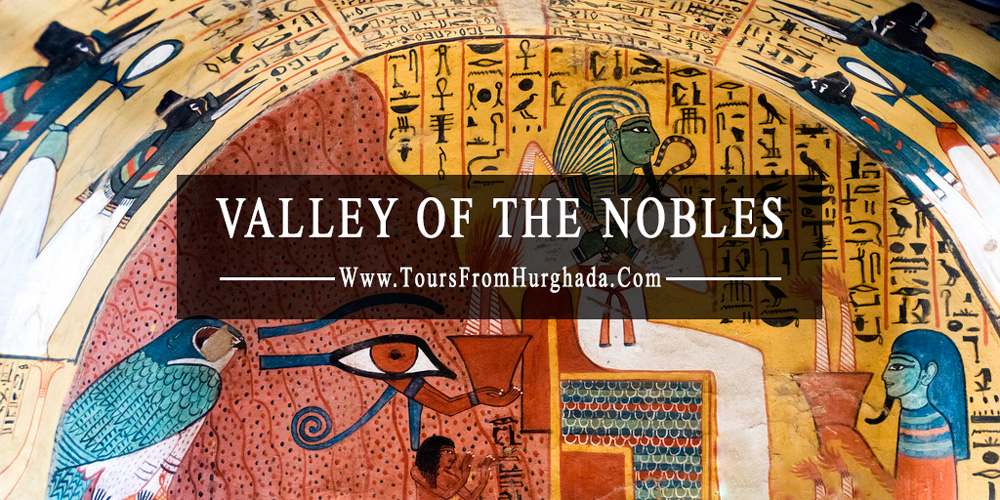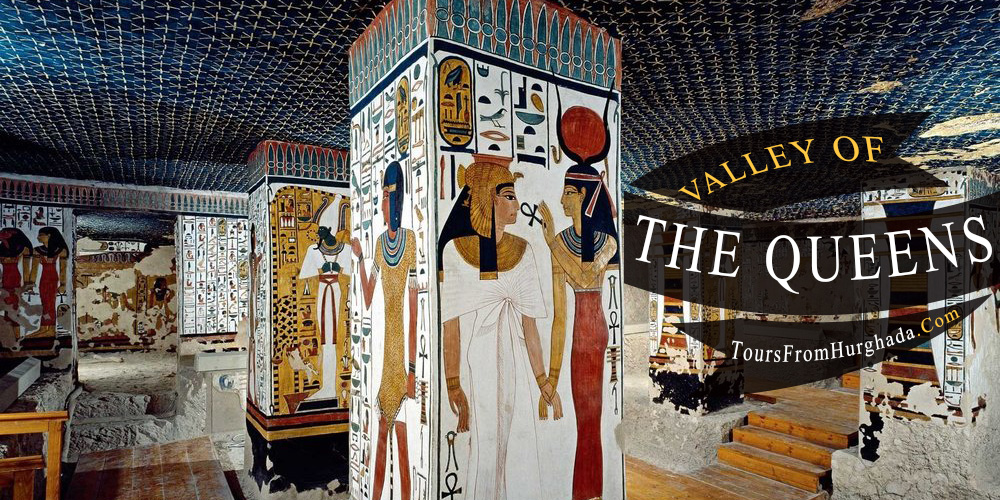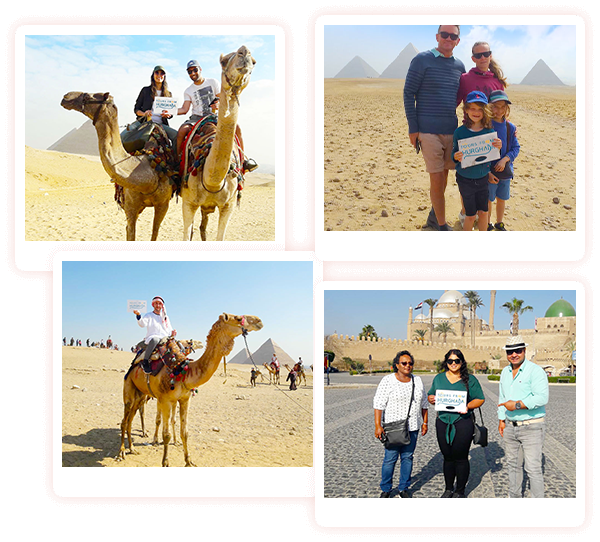It is really hard to believe that a monument of this magnitude like the majestic Valley of the Kings can be located within the core of a hill, where it acted as the final resting place of various Great Pharaohs of the new Kingdom (1570-1070 BC). The valley of the kings is considered to be one of the ancient world's most important monuments for its historical significance and culture significant. The valley can be found hidden in the heart of a hill in order to protect from tomb raiders who seek to rob the priceless artifacts. The Valley of the Kings was regarded as the holiest of all places due to the importance of the concept of death to the Egyptians as they view death as a passage to the other life where they will join the gods in the fields of reeds.
Valley of The Kings History
 From the 16th to the 11th century, the Valley of the kings was a royal tomb to the 18, 19, and 20thdynasty of Pharaohs and powerful privileged Nobles who transformed the history of ancient Egypt. It contains about 63 cut-rock tombs and chambers in various sizes depending of the stature of the deceased and decorated with beautiful scenes of ancient Egyptian mythology plus images from their daily life that provide information about their history, culture, and religious beliefs during this life but unfortunately it was the subject of many tomb raiders & grave robbers throughout the centuries which to a lot of facts to be lost. The Valley of the kings has been the focus of archaeological exploration since the end of the 18th century, and its tombs and burials sites continue to stimulate research and interest within the field of Egyptology until this present day which explains why it became a World Heritage Site by the UNESCO in 1979.
From the 16th to the 11th century, the Valley of the kings was a royal tomb to the 18, 19, and 20thdynasty of Pharaohs and powerful privileged Nobles who transformed the history of ancient Egypt. It contains about 63 cut-rock tombs and chambers in various sizes depending of the stature of the deceased and decorated with beautiful scenes of ancient Egyptian mythology plus images from their daily life that provide information about their history, culture, and religious beliefs during this life but unfortunately it was the subject of many tomb raiders & grave robbers throughout the centuries which to a lot of facts to be lost. The Valley of the kings has been the focus of archaeological exploration since the end of the 18th century, and its tombs and burials sites continue to stimulate research and interest within the field of Egyptology until this present day which explains why it became a World Heritage Site by the UNESCO in 1979.
Valley of The Kings Location
 Valley of the Kings is located on the west bank of the Nile, across from modern Luxor in the center on the Theban necropolis. The high point of the Theban Hills has a pyramidal shape when viewed from the entrance to the valley, which resembled the primordial hill where Atum created the universe and that's why some Egyptologists & Archeologists believe it could have been the reason to become the Valley of the Kings. Its inner map is divided into the west valley and the east valley where a lot of the royal tombs can be found.
Valley of the Kings is located on the west bank of the Nile, across from modern Luxor in the center on the Theban necropolis. The high point of the Theban Hills has a pyramidal shape when viewed from the entrance to the valley, which resembled the primordial hill where Atum created the universe and that's why some Egyptologists & Archeologists believe it could have been the reason to become the Valley of the Kings. Its inner map is divided into the west valley and the east valley where a lot of the royal tombs can be found.
Valley of the Kings Facts
 The valley is the home to many important ancient kings and queens as it contains the remains of pharaohs like Rameses (I, II, III, IV, V, VI, VII, IX, X), Amenhotep I, Hatshepsut, and the famous boy king Tutankhamun. The first pharaoh to be buried in the Valley of the Kings was pharaoh Thutmose I while the last pharaoh was Rameses X. It also contains powerful nobles who played a powerful role next to their kings and queens with their wives and children.
The valley is the home to many important ancient kings and queens as it contains the remains of pharaohs like Rameses (I, II, III, IV, V, VI, VII, IX, X), Amenhotep I, Hatshepsut, and the famous boy king Tutankhamun. The first pharaoh to be buried in the Valley of the Kings was pharaoh Thutmose I while the last pharaoh was Rameses X. It also contains powerful nobles who played a powerful role next to their kings and queens with their wives and children.
King Tutankhamun Tombs
 One of the most popular tombs in the Valley of the Kings is the tomb of Pharaoh Tutankhamun (1332-1323 BC), sometimes called King Tut which was discovered in 1922 by Howard Carter. The tomb contained several chambers but the most important rooms are the burial chamber and the treasure chamber. Tut tomb is a highly important discovery because the mummy of the young king is intact. Within the tomb the amazing artifacts were found including King Tut's fully preserved mummy and about 5,398 items were found like a solid gold coffin, a chariot, the enchanting golden face mask, thrones, a meteorite blade and countless others which was able to give an insight of the art design and metal technology of his time.
One of the most popular tombs in the Valley of the Kings is the tomb of Pharaoh Tutankhamun (1332-1323 BC), sometimes called King Tut which was discovered in 1922 by Howard Carter. The tomb contained several chambers but the most important rooms are the burial chamber and the treasure chamber. Tut tomb is a highly important discovery because the mummy of the young king is intact. Within the tomb the amazing artifacts were found including King Tut's fully preserved mummy and about 5,398 items were found like a solid gold coffin, a chariot, the enchanting golden face mask, thrones, a meteorite blade and countless others which was able to give an insight of the art design and metal technology of his time.
Valley of The Kings Curse
 The pharaoh’s curse is an affliction that will be cast on anyone who disturbs the mummy of an Ancient Egyptian tomb, especially a pharaoh. The curse will cause illness and death to anyone who disturbs the tomb of the mummy-like tomb raiders or even archaeologists. The curse became very popular all over the world after the discovery of King Tutankhamun's tomb. The myth of the mummy's curse became a world phenomenon in the 60s which started a new wave of archaeological interest in Egyptology. It is known to be a magical phenomenon but many documentaries had argued that the curse could be caused by scientific substances like bacteria and radiation.
The pharaoh’s curse is an affliction that will be cast on anyone who disturbs the mummy of an Ancient Egyptian tomb, especially a pharaoh. The curse will cause illness and death to anyone who disturbs the tomb of the mummy-like tomb raiders or even archaeologists. The curse became very popular all over the world after the discovery of King Tutankhamun's tomb. The myth of the mummy's curse became a world phenomenon in the 60s which started a new wave of archaeological interest in Egyptology. It is known to be a magical phenomenon but many documentaries had argued that the curse could be caused by scientific substances like bacteria and radiation.
Thutmose III Tomb
 Thutmose III tomb is considered to be one of the oldest tombs and is located at the far end of the east valley. The oval-shaped chamber of the tomb is decorated with mesmerizing inscriptions and stick figures. Ramesses III‘s tomb contains the popular paintings of two blind harpists while King Amenhotep I tomb taught us why it was a common practice to build his tomb closer to the river to prevent the theft of their final resting places and the destruction of their legacy.
Thutmose III tomb is considered to be one of the oldest tombs and is located at the far end of the east valley. The oval-shaped chamber of the tomb is decorated with mesmerizing inscriptions and stick figures. Ramesses III‘s tomb contains the popular paintings of two blind harpists while King Amenhotep I tomb taught us why it was a common practice to build his tomb closer to the river to prevent the theft of their final resting places and the destruction of their legacy.
Ramesses VI Tomb
 Ramesses VI's tomb is known to depict the fundamental elements of belief to the ancient Egyptians like the creation of the sun and their daily journey in the world of the darkness. It has an enchanting burial chamber, a vivid images of colors on a white background, the ceiling of which is decorated with hieratic graffiti and images depicting the ancient sky goddess Nut swallowing & giving birth to the sun during the creation. the tomb has a different form of Hieroglyphics and contains the incomplete texts taken from the book of the gates.
Ramesses VI's tomb is known to depict the fundamental elements of belief to the ancient Egyptians like the creation of the sun and their daily journey in the world of the darkness. It has an enchanting burial chamber, a vivid images of colors on a white background, the ceiling of which is decorated with hieratic graffiti and images depicting the ancient sky goddess Nut swallowing & giving birth to the sun during the creation. the tomb has a different form of Hieroglyphics and contains the incomplete texts taken from the book of the gates.

